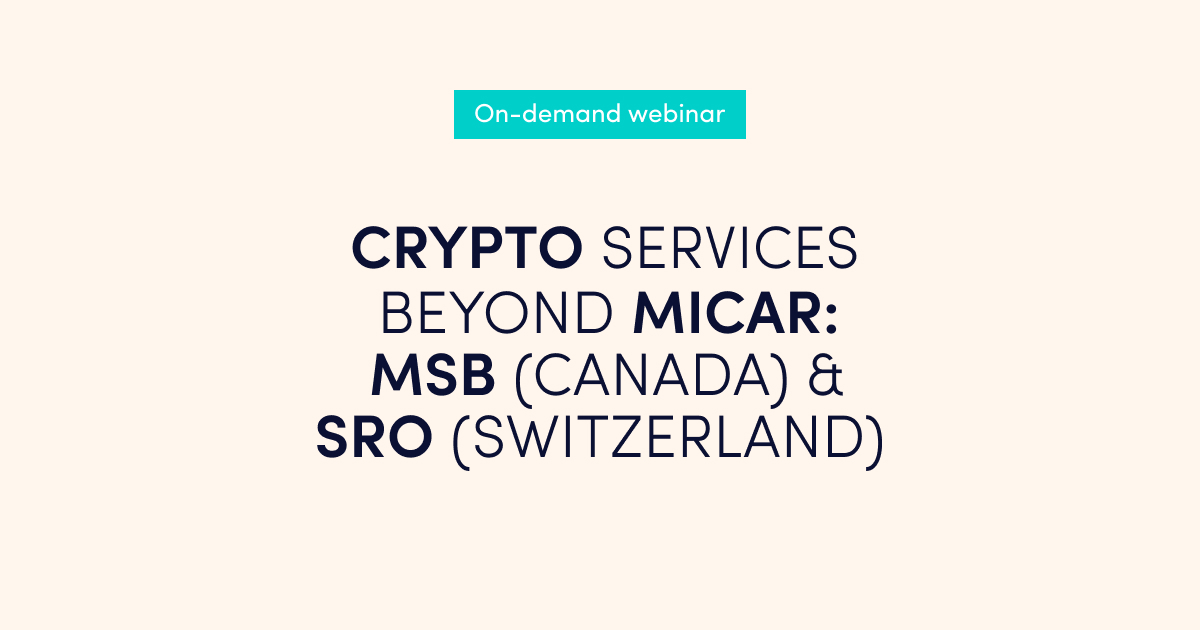2024 is an eventful year for fintech, and Advapay wants to keep you updated on what’s happened so far and what is expected for the next few months. Fintech, crypto, payments and the regulatory environment impacting the financial sector have unleashed a range of changes and noteworthy events.
Knowing what to expect, you can prepare more effectively for the issues impacting financial services providers.
2024 in Review: Noteworthy Regulations and News
A wave of new regional and national regulations applies to instant payments, buy-now-pay-later, online banking and cryptocurrencies. Beyond all the ways the global regulatory environment is changing for financial firms, the financial industry is looking to innovate new means of crypto exchange – Mastercard released a new crypto network earlier this year, providing an alternative to traditional crypto wallet addresses.
Here’s what’s new:
1. Instant Euro payments
On 26 February 2024, the Council of the European Union passed a regulation requiring payment service providers to offer instant payments for EU and EEA-based business and consumer customers. Adding the following requirements, payment and e-money institutions (PIEMIs) must also:
- Very recipient IBAN and name to prevent fraud
- Limit charges to standard fees for credit transfers
- Observe appropriate safeguards and implement instant payments within an appropriate transitional period
With broader availability of instant payments in the Eurozone, the payments market is likely to open further and may begin to change the business environment for banks and credit card processes – companies that traditionally had a greater share of the market.
2. Australia’s BNPL rules update
Given the growing popularity of Buy Now, Pay Later (BNPL) apps and services, Australia’s government is acting to introduce regulations designed to protect consumers and set standards for loan providers to follow.
BNPL providers will be required to apply for a federal Australian Credit License. Newly introduced legislation would also require lenders to run credit checks when evaluating borrowers.
BNPL is creating more competition in lending and is popular with younger borrowers, including Gen Z consumers.
3. PSD3 and PSR
With the third Payment Services Directive (PSD3) and Payment Services Regulation (PSR), the European Commission proposes to shake up the European payments marketplace and significantly impact fintech companies and financial institutions. This introduces changes from PSD2 to open up banking, fight fraud, strengthen consumer rights and create more legal and regulatory consistency between banks and neobanks.
Financial institutions are watching closely because these changes will introduce greater restrictions and more significant sanctions for non-compliance. Here are a few more notes on PSD3:
- Organizations typically get 18 months to adapt to new Payment Services Directive updates, so if a final draft is published in late 2024 or 2025, implementation is expected in 2026.
- More robust protections for open banking clients, including new security standards and transparent, customer-driven permissions dashboard access
4. Global Cryptocurrency Regulation Changes
Cryptocurrencies previously contributed to high-profile bank collapses, leading governments around the world to quickly pivot towards greater regulation of crypto assets or speed up regulation that was already planned for public release. Individual countries are responding differently and on different timelines. And within these regulation changes, stablecoins are often treated differently from other crypto assets.
The EU’s Markets in Crypto-Assets Regulation (MiCA) goes into effect this year, with MiCA’s full provisions applying to cryptocurrency by 30 December, 2024. Crypto firms and assets that aren’t already licensed and regulated by other laws will become subject to MiCA across all EU member states.
In Asia, countries’ reactions to crypto range from outright bans (China) to relatively open but still regulated and managed exchanges (Japan; although notably some crypto exchanges are leaving the country in response to regulatory changes). India’s previous ban on cryptocurrency was struct down in 2020 by the country’s Supreme Court, but official regulation allowing crypto is still moving through parliament.
In the US, a crypto regulation bill was introduced in the House of Representatives as The Financial Technology Protection Act of 2023 (H.R. 2969) with a similar bill introduced in the Senate in April 2023. On 22 July, the House passed this bill, which now moves to the Senate.
More on MiCA
MiCA creates consistent governance rules for crypto-assets to improve transparency, transaction supervision, and market stability. Optional transitional rules will allow EU jurisdictions to phase-in the new frameworks and prepare members of the public and financial institutions.
Institutions offering crypto asset trading are required to, among other provisions:
- Offer clear, non-misleading communications with asset holders
- Provide holders the right to withdraw funds
- Publish crypto information such as whitepapers online and hold legal responsibility for the accuracy of all communications
Issuers of assets that reference other assets must meet specific criteria designed to elevate the industry’s standards and must maintain a central office within the EU, among other provisions:
- Be authorized by an EU member state to offer tokens.
- Maintain assets greater than or equal to liabilities as well as funding amounting to one quarter of the previous year’s fixed overhead, 2% of the average total value of reserve assets, or €350,000 – whichever is highest.
- Offer market value redemption at any time upon request to token owners
In June 2024, the new rules on stablecoins took effect, with asset-referenced tokens (ARTs) and e-money tokens (EMT) issuers required to acquire licenses.
5. Mastercard’s crypto credential network
A new peer-to-peer network by Mastercard is launching in Europe and Latin America, providing cryptocurrency exchange and allowing users to assign an alias to their crypto wallets. Shorter aliases and customizable vanity addresses give end users more options over traditionally long cryptocurrency wallet names.
Convenient and fast P2P payments are an area financial brands such as Mastercard and others hope to expand in the next few years. Growth in working abroad and in sending remittances across national borders is leading to greater demand for global P2P payments.
6. Crypto ETFs
Crypto-themed ETFs aren’t new, but until recently ETFs didn’t necessarily include crypto assets as the underlying assets. Exchange-based investment funds backed by crypto assets are joining global markets, with the US approving the first Bitcoin ETFs in January 2024 followed by Ether ETFs in July 2024 and Hong Kong approving an inverse bitcoin ETF in July 2024.
Given the size of the US financial market and Hong Kong’s interest in leading Asia’s crypto ETFs market, these two developments could mean growth in overall interest in cryptocurrency investment from a broader range of investors. Investment growth could increase asset demand and overall asset market values.
More Trends to Watch: 2024 and 2025
Throughout this and the following year, these notable trends could impact your business:
1. AI in Fintech and Automated Advisory Services
The use of artificial intelligence (AI) in finance is growing quickly, with a 17% compound annual growth rate (CAGR) and the overall fintech AI market size is projected to hit $70.1 billion USD in 2033.
AI is one trend driving a growth in open banking. Bunq, Europe’s second-largest neobank, has a new partnership with Mastercard for bunq’s customers to link all their accounts within an app to gain a comprehensive view of their finances.
With strong growth, greater regulation may be on the horizon. The US Treasury began inviting feedback from the public on how AI is used in financial services in June 2024.
2. Demand for Neobanking, P2P, Mobile Payments and Digital Wallets
Customers are eagerly seeking flexibility, technological capabilities and convenience in finance, creating opportunities for alternative services and institutions in the financial industry.
Neobanks are increasing in popularity, with the projected transaction value of the Central and Western European markets growing at 13.34% CAGR between 2024 and 2028. By 2028, neobanks in this region are likely to have more than 60 million users.
The ability to bring together a comprehensive view of multiple accounts, easily transfer funds and remittances, and access a broader range of services are becoming standard customer expectations. Financial organizations should consider the feasibility of advancing their own technology platforms – or risk missing out on a significant transition happening in the marketplace.
3. Blockchain and Distributed Ledger Technologies (DLT)
Blockchain and other DLTs can help financial institutions streamline operations, manage risk more effectively, leverage new opportunities and add new business lines – there’s a huge range of potential uses in financing, asset management and related areas.
Since DLT reduces the costs associated with doing business and only requires an internet connection, these technologies could also expand access to banking services for a broader range of customers.
4. Crowdfunding
Investment crowdfunding is an interesting trend with mixed recent success. Although the European crowdfunding market’s volume declined somewhat in 2022 compared with 2021, rising interest rates and market uncertainty may reshape the sector by attracting new companies seeking investment.
New crowdfunding services providers may want to compare national requirements for registering a platform. From operations in one European Economic Area country, organizations can launch services into other European markets.
Preparing for Technological and Regulatory Change
Given how much is changing in 2024, fintechs need a holistic approach to their growth strategies. Advapay is a technology company and a consultancy, and we can help you prepare for the technological and regulatory challenges your fintech faces.
To find out more, reach out to our team.
Advapay at stake:
How can Advapay can assist you in launching your fintech business?
• Assistance in EMI/PI licencing in the EEA/UK
• Registration of MSB company in Canada
• Delivery of a comprehensive Core banking system encompassing back-office and white-label applications for end-users
• Assistance in payment infrastructure development
• BaaS-solutions in collaboration with our partners – EEA/UK licenced EMIs and PIs









